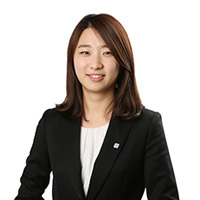[Feature] Soju goes ‘newtro’
New Jinro hits 100 million bottles in sales less than a year after launch
By Jo He-rimPublished : Jan. 12, 2020 - 11:42
Soju is going “newtro.” With the trend -- a combination of “new” and “retro” -- sweeping the South Korean retail scene, liquor makers have brought back new versions of discontinued soju.
These products are especially popular with consumers in their 20s and 30s, according to the industry.
In April 2019, liquor maker HiteJinro -- which leads the soju market with its signature Chamisul -- introduced a new version of its old soju brand Jinro, dubbed “Jinro Is Back.”
These products are especially popular with consumers in their 20s and 30s, according to the industry.
In April 2019, liquor maker HiteJinro -- which leads the soju market with its signature Chamisul -- introduced a new version of its old soju brand Jinro, dubbed “Jinro Is Back.”

For the new version, the company brought back the transparent, blue soju bottle of past decades and printed the brand’s symbolic toad character on it, reviving the old Jinro produced from 1975 to 1983.
The new Jinro broke a record last month, selling more than 100 million bottles in seven months. Over 11 million bottles were sold just 72 days after its release in April, exceeding its annual sales target.
The return of the old blue bottles, a breakaway from the modern-day typical 360-milliliter green bottles, largely contributed to the popularity of the product, said the company.
It evoked a sense of nostalgia among those in their 40s and 50s and curiosity among drinkers in their 20s and 30s, becoming a hit with the younger generation.
HiteJinro also adjusted the alcohol content to 16.9 percent amid the growing preference for low-alcohol drinks. This is lower than HiteJinro’s Chamisul Fresh, which has alcohol content of 17 percent.
“The blue bottle came across as so new, and it looked cute. It has a neat taste, not too strong. I think it is really popular among my age group,” Yun Doo-wool, an office worker in Seoul, told The Korea Herald.
The 28-year-old added that her curiosity had been sparked by the blue bottle, which she had seen in TV shows set in the past.
HiteJinro said it had analyzed millennials -- the entry consumers of alcoholic drinks -- and found that they have strong views and influence the purchase patterns of other age groups.
“We planned for four years for the new Jinro, and we had to think about how we would promote our product while maintaining the cultural value of soju,” Jeon Si-nae, an official from the HiteJinro, told The Korea Herald.
The most important task was to reinterpret the old product to reflect the present, Jeon said.
“We were clear that newtro is not just bringing back the same old (thing), but that it is a new positioning of the product in this time. And we see that the new Jinro came to appear to consumers as more than just nostalgia but as a new and trendy item,” Jeon added.
Newtro soju competition

Busan-based Daesun Distilling was the first to introduce newtro-style soju, reviving its Daesun soju brand that was popular in the 1970s.
In January 2017, the regional liquor maker released Daesun in 360-milliliter green bottles, grabbing the attention of consumers.
Realizing that the appearance of the bottle could ride on the newtro trend, Daesun redesigned its label in October, with its logo including both Korean and Hanja -- or Chinese characters -- in the old cursive style used when the original Daesun first came out in 1965.
Other regional soju manufacturers also jumped on the bandwagon.
Liquor maker Kumbokju, based in Daegu, rolled out a new brand dubbed “Soju King Kumbokju,” in transparent, blue bottles with its symbolic king character.
Muhak, based in Changwon, rolled out a newtro version of its soju brand in October, also in blue bottles, featuring “Cheongchun” -- “youth” in Korean -- in hanja on its logo.
Green or blue?
Why have most soju bottles all been of the same shape, size and color? Among the total of 3.15 billion bottles of soju sold last year, 97.3 percent were the 360-milliliter green bottles.
There is no government regulation requiring soju companies to use such bottles. But in 2009, manufacturers voluntarily agreed to set green bottles as the standard for soju.
All soju companies collect, wash and sort bottles before distributing them again for reuse. When they entered into the agreement, the companies sought to reduce the cost of collecting and sorting by using bottles of the same color and size.
HiteJinro’s Chamisul 360-milliliter green bottles were most circulated at the time.
However, the company’s release of the new Jinro soju had led to complaints from its rivals that it had broken the 2009 agreement.
Lotte Chilsung had refused to return the blue bottles that it collected to HiteJinro, demanding the latter pay for the extra costs involved in sorting and distributing the bottles.
The two sides settled their monthslong dispute last year. HiteJinro agreed to pay a commission of 10.5 won per bottle (0.9 cents) returned.
By Jo He-rim (herim@heraldcorp.com)





![[Herald Interview] 'Trump will use tariffs as first line of defense for American manufacturing'](http://res.heraldm.com/phpwas/restmb_idxmake.php?idx=644&simg=/content/image/2024/11/26/20241126050017_0.jpg&u=20241126161719)












